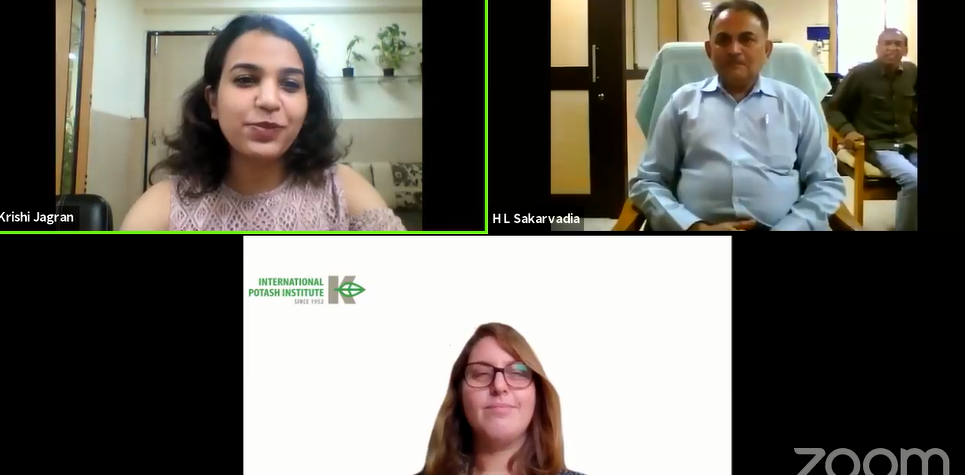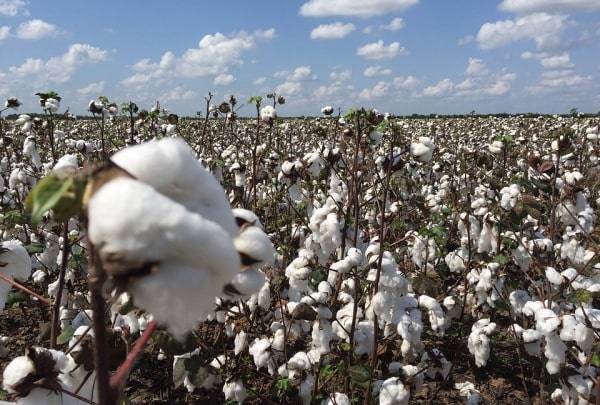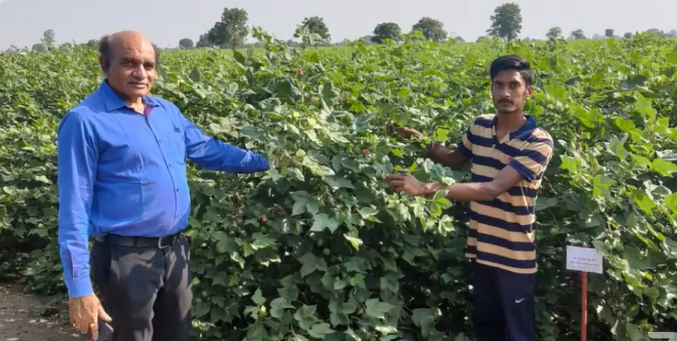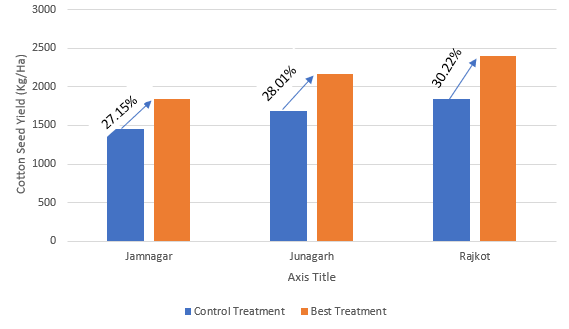
International Potash Institute (IPI), conducted a Facebook live on Krishi Jagran’ s FB Page about the “Management of Potassium for maximizing the yield & quality of Bt Cotton specifically in Saurashtra Region of India”.
This live discussion was graced by 2 distinguished speakers. Dr. Adi Parelman from International Potash Institute, which is a non-governmental & non-profitable organization with a mission to develop & promote balanced fertilization. She is the coordinator for India at IPI & Elaborated on various initiatives of IPI in India.
Dr H.L. Sakarvadia, Assistant Professor, Department of Agricultural Chemistry & Soil Science, also helped us understand Potassium management in Saurashtra Region as he has been working extensively on various researches based in Saurashtra Region.
It was a very interactive & interesting discussion that was attended by people from all over India. You can find this discussion on Facebook Page of Krishi Jagran.
Junagarh Agriculture University conducted Adhoc Research sponsored by International Potash Institute (IPI) on Management of Potassium for maximizing the yield & Quality of Bt Cotton in Saurashtra Region.

About Cotton:
There is no doubt that cotton is one of the most important fibre crops of the country with 10.85 million hectares area under its cultivation in India. India is the second largest producer of Cotton in the world. Area under its cultivation in Gujarat is about 2.65 million hectare with production of 86.16 lakh tones.
Yet the maximum yield potential for cotton is low for various reasons like monocropping practice, decline in soil fertility status, delayed sowing & imbalanced nutrition.
Potassium is Vital for Increasing the Crop Yield
-
It increases root growth & improves draught tolerance.
-
Builds cellulose & reduces lodging & enhances their winter hardiness.
-
Activates at least 60 enzymes involved in the growth of plant.
-
It regulates the opening & closing of the stomata, which are essential for photosynthesis, water & nutrient transport and plant cooling.
-
It helps in translocation of assimilated sugar from leaves is greatly reduced in potassium deficit plants.

Deficiency of Potassium in Cotton:
-
Deficiency of Potassium occurs more commonly in cotton crop than other agronomic crops. It affects older leaves first in early season.
-
Yellowish white mottling of leaves which changes to numerous brown specks at the leaf tips, around margins & between veins are most widespread deficiency symptoms in cotton.
-
Downward curling of Leaf tip & margin & finally whole leaf turns rust colored, fragile & drops prematurely.
-
Potassium deficiency is also closely associated with low chlorophyll content, reduced photosynthesis & restricts saccharide translocation which negatively impacts fiber length & secondary wall thickness.
About the Research:
Extensive research was carried out by Junagarh Agriculture University in association with IPI at 3 different districts in Saurashtra namely Junagarh, Jamnagar & Rajkot.
Different treatments of potassium fertilizer were provided & their effect was studied on various attributes such as:
-
Seed cotton yield
-
Stalk yield
-
Ginning percentage
-
Oil Content
-
Protein Content & more

Conclusion:
-
Potassium plays a vital role in osmo-regulation process in plants, which is helpful for growth & development of the crops against biotic and abiotic stresses, ultimately enhancing the yield and quality of crops.

-
It can be concluded that the application of 150kg/ha potassium in two equal split at basal and 30 DAS and Foliar spray of water-soluble fertilizers Starter NPK 11: 36: 24 at 45 & Booster NPK 08: 16:39 at 75 DAS along with recommended dose of 240 kg N/ha & 50 Kg P₂O₅ is helpful in maximizing the yield & quality of Cotton.















